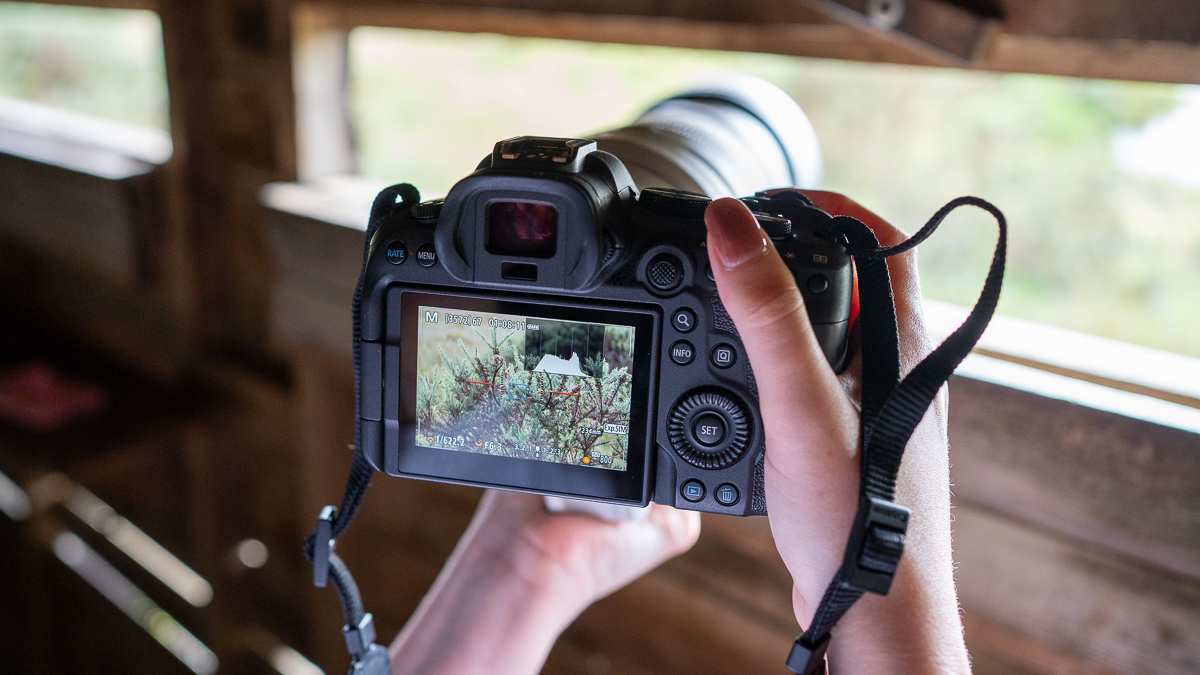Giant space 'boulders' unleashed by NASA's DART mission aren't behaving as expected, revealing hidden risks of deflecting asteroids
Debris released from the asteroid Dimorphos during NASA's DART mission has a higher momentum and less random distribution than expected, which "changes the physics we need to consider when planning these types of missions," researchers say.
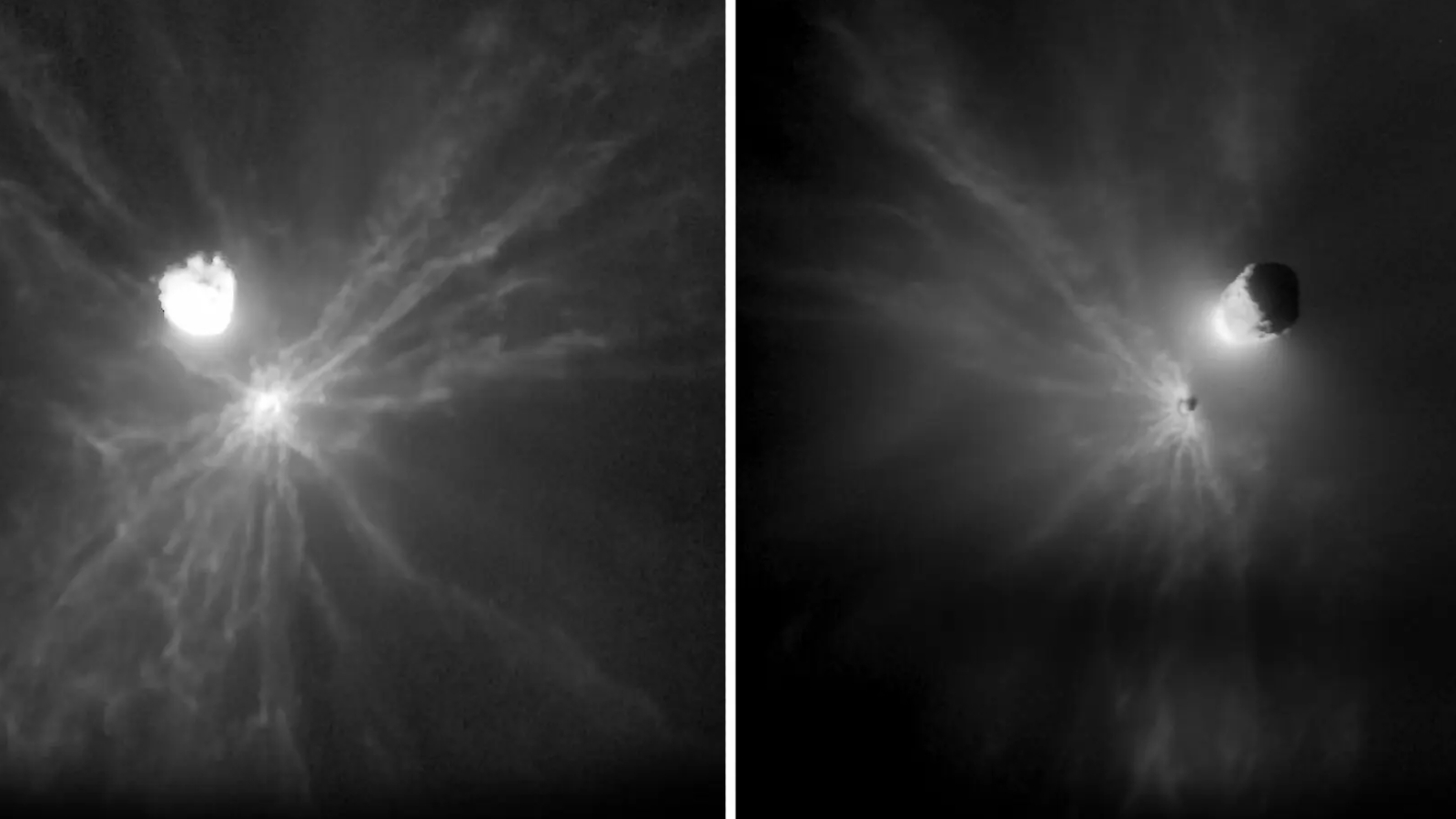
Three years ago, NASA made history by deliberately smashing a spacecraft into a large asteroid, altering its course and demonstrating humankind’s ability to protect our planet from "potentially hazardous" space rocks in the future.
But a new analysis hints that the debris from this monumental collision is not behaving as expected, raising doubts about the success of future asteroid-deflecting missions.
On Sept. 26, 2022, NASA's Double Asteroid Redirection Test (DART) spacecraft purposefully collided with the asteroid Dimorphos, crashing directly into the middle of the space rock at around 15,000 mph (24,000 km/h). The mission was a smashing success: Not only did DART alter Dimorphos' trajectory — shortening its trip around its partner asteroid Didymos by around 30 minutes — it also completely changed the shape of the asteroid.
The collision, which occurred more than 7 million miles (11 million kilometers) from Earth, demonstrated that this type of action, known as the "kinetic impactor" method, was a conceivably viable option for protecting our planet from potentially hazardous asteroids.
However, a new study, published July 4 in The Planetary Science Journal, has revealed a hidden complication: Dozens of large "boulders," which were knocked loose from the asteroid by the spacecraft are apparently traveling with greater momentum than predicted and have configured into surprisingly non-random patterns.
Related: Could scientists stop a 'planet killer' asteroid from hitting Earth?
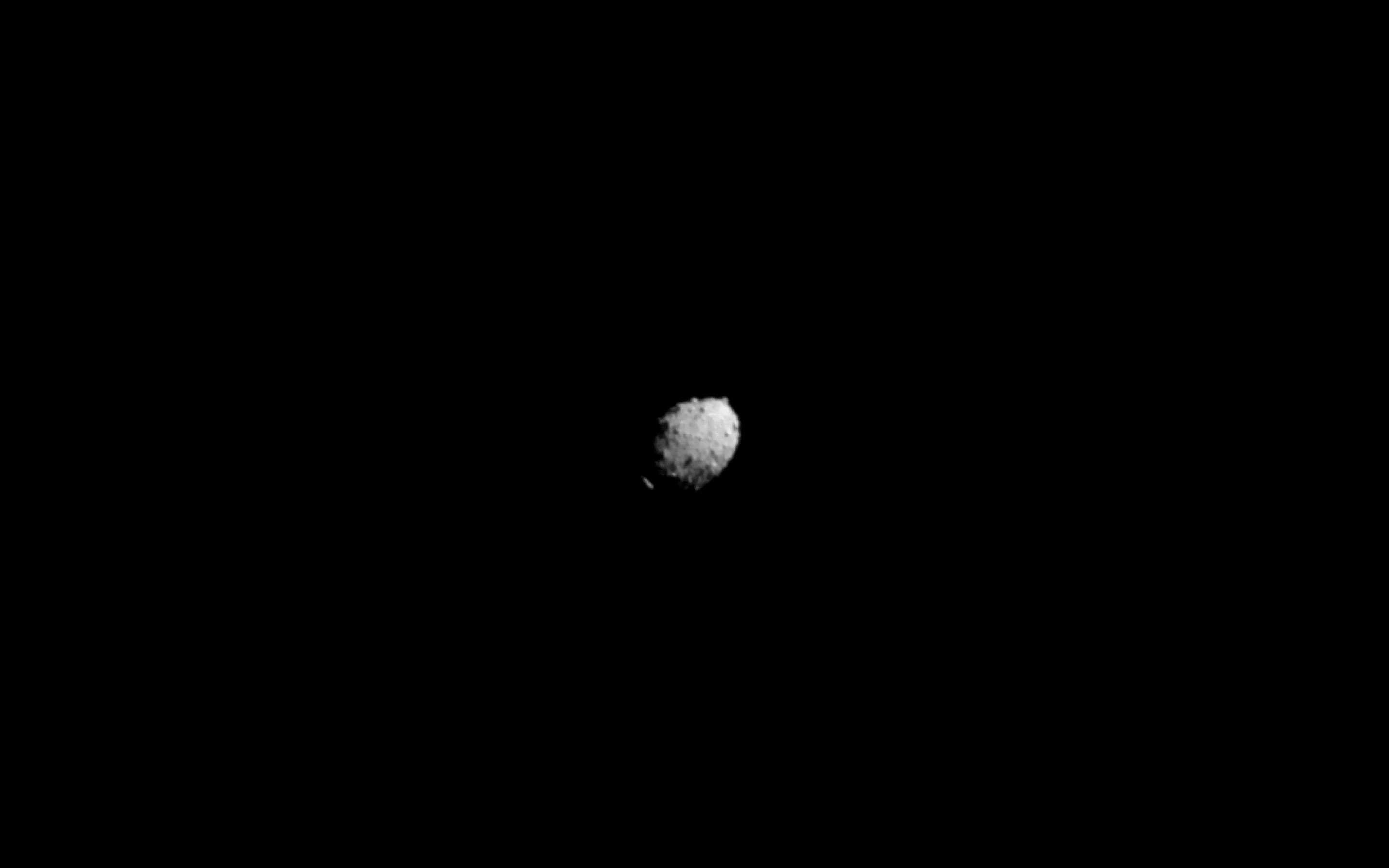
The researchers analyzed images from the European Space Agency's (ESA) Light Italian Cubesat for Imaging of Asteroids (LICIACube), which flew alongside DART to monitor the collision. This allowed them to track 104 boulders — each between 0.7 and 11.8 feet (0.2 to 3.6 meters) across — as they shot away from the asteroid.
Get the world’s most fascinating discoveries delivered straight to your inbox.
The big takeaway was that these boulders had around three times more momentum than predicted, likely as the result of "an additional kick" the boulders received as they were pushed away from the asteroid's surface, study lead author Tony Farnham, an astronomer at the University of Maryland, said in a statement. "That additional factor changes the physics we need to consider when planning these types of missions," he added.
The team also noted that the boulders were arranged into unexpected patterns: "We saw that the boulders weren't scattered randomly in space," Farnham said. "Instead, they were clustered in two pretty distinct groups, with an absence of material elsewhere, which means that something unknown is at work here."
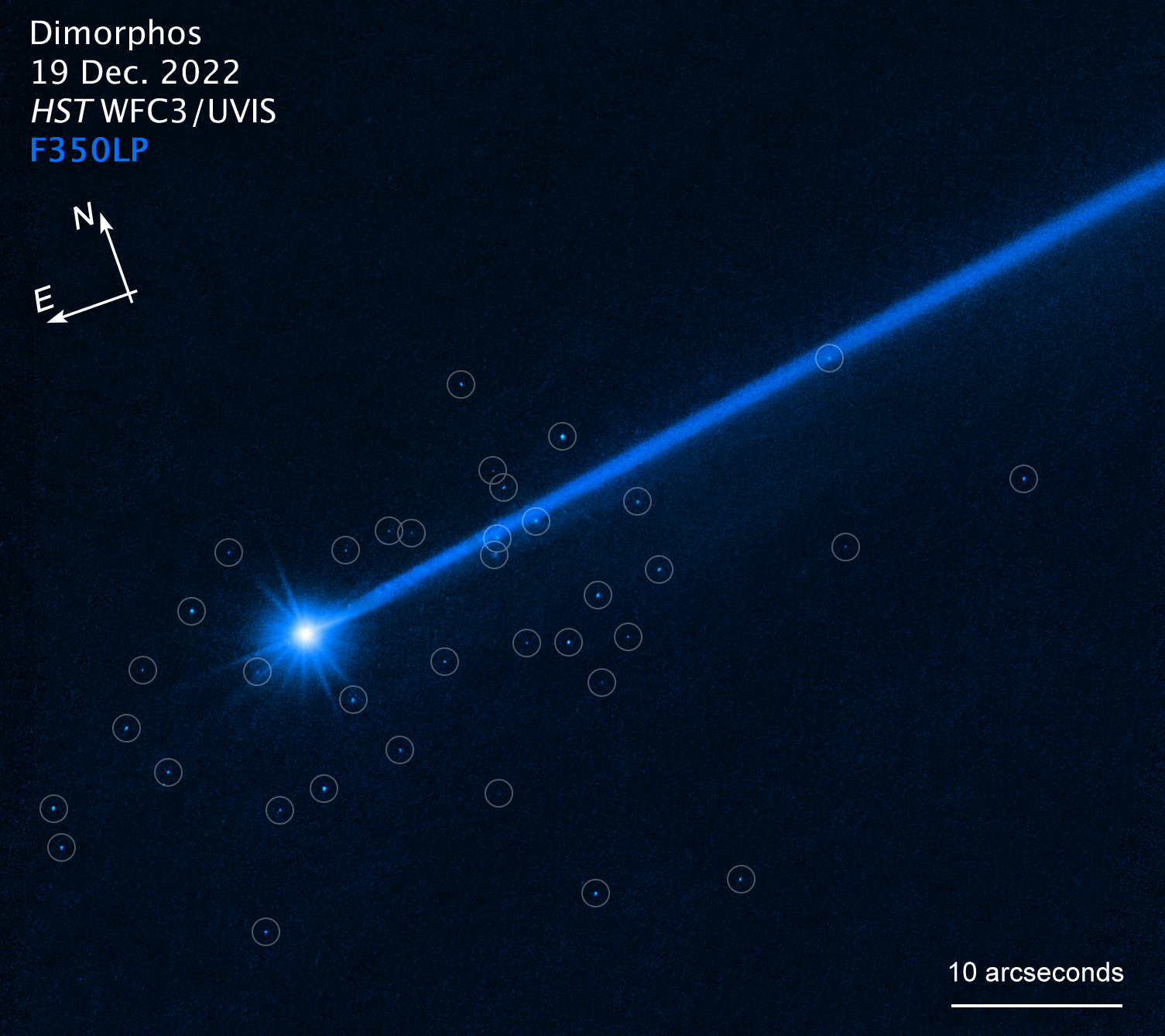
The researchers want to learn more about what happened so that we have all the necessary information at hand if and when we need to make decisions about using a kinetic impactor to protect our planet from an incoming space rock in the future.
"If an asteroid was tumbling toward us, and we knew we had to move it a specific amount to prevent it from hitting Earth, then all these subtleties become very, very important," study co-author Jessica Sunshine, an astronomer at the University of Maryland, said in the statement. "You can think of it as a cosmic pool game," she added. "We might miss the pocket if we don't consider all the variables."
Unpredictable fragments
This is not the first time scientists have noticed something unexpected about the fallout from the DART mission.
In April 2024, researchers noted that some of the largest boulders might have been set on a collision course with Mars and could smash into the Red Planet in around 6,000 years, potentially endangering any future human colonies that may live there.
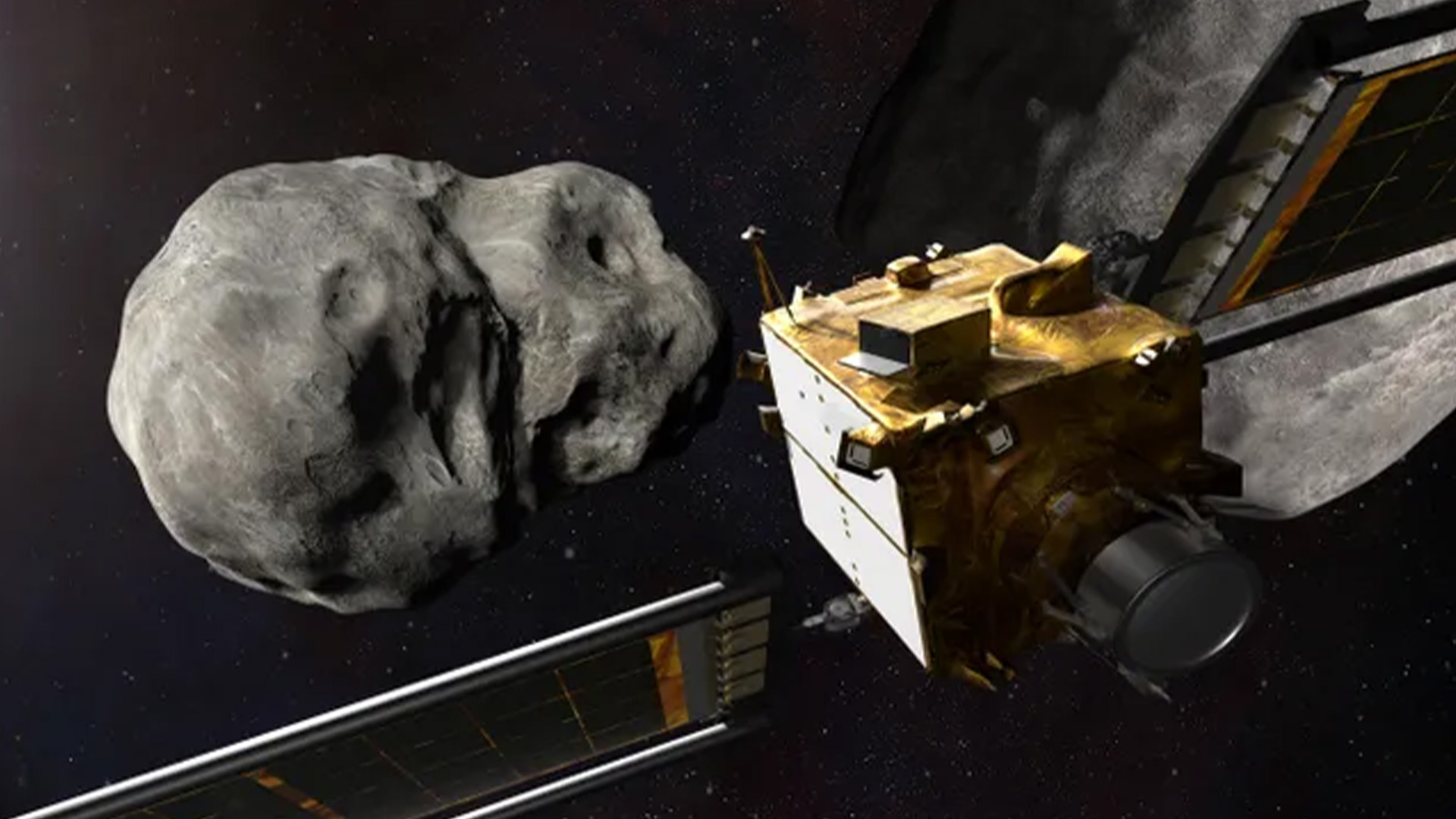
In August last year, simulations using LICIACube data also suggested that some of the smaller fragments from the asteroid could hit Earth in around 30 years, potentially triggering a spectacular meteor shower without posing a real threat to our planet.
However, despite all these uncertainties, the kinetic impactor method is still the most viable option to protect ourselves from any real threat of being hit by an asteroid.
This topic was discussed earlier this year when the "city killer" asteroid 2024 YR4 was temporarily believed to have a roughly 3% chance of hitting Earth in 2032. The odds of a collision are now zero, but experts are keen to keep the conversation going, especially as the severe cuts to NASA's budget proposed by the Trump administration could limit our ability to spot dangerous space rocks.
Researchers will get a better idea of what is happening with the Dimorphos debris next year, when ESA's Hera spacecraft arrives at the asteroid to properly study the fallout from the DART collision.

Harry is a U.K.-based senior staff writer at Live Science. He studied marine biology at the University of Exeter before training to become a journalist. He covers a wide range of topics including space exploration, planetary science, space weather, climate change, animal behavior and paleontology. His recent work on the solar maximum won "best space submission" at the 2024 Aerospace Media Awards and was shortlisted in the "top scoop" category at the NCTJ Awards for Excellence in 2023. He also writes Live Science's weekly Earth from space series.
You must confirm your public display name before commenting
Please logout and then login again, you will then be prompted to enter your display name.
